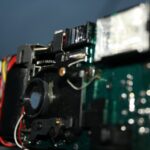Teaching Division: Effective Strategies for Educators
Division can be a challenging concept for students to grasp, but with the right strategies and approach, educators can help their students better understand and master this fundamental mathematical operation. In this article, we will discuss some effective strategies for teaching division in the classroom.
1. Build on students’ prior knowledge
Before introducing division, it is important to build on students’ prior knowledge of related concepts such as multiplication and fractions. Students should have a solid understanding of these concepts before moving on to division. Reviewing and reinforcing these concepts will help students make connections and see the relationship between them.
2. Introduce division through real-world examples
One effective way to introduce division is through real-world examples and scenarios that students can relate to. For example, you can use situations such as dividing a pizza among friends, sharing toys equally among siblings, or dividing a set of candies into equal groups. By using familiar and engaging examples, students can better understand the concept of division and see its practical application in real life.
3. Use visual aids and manipulatives
Visual aids and manipulatives are powerful tools for teaching division. Use tools such as division charts, number lines, and base-ten blocks to help students visualize and understand the division process. Manipulatives can make abstract concepts more concrete and help students see division in action. Encourage students to create their own visual representations of division problems to deepen their understanding.
4. Teach multiple division strategies
There are several strategies for solving division problems, and it is important to teach students multiple approaches so they can choose the method that works best for them. Some common division strategies include long division, partial quotients, and the area model. By teaching different strategies, educators can help students develop problem-solving skills and flexibility in their thinking.
5. Provide opportunities for practice and reinforcement
Practice is essential for mastering any new skill, including division. Provide students with plenty of opportunities to practice division problems independently and in groups. Use worksheets, games, and interactive activities to reinforce division concepts and help students build fluency in division. Encourage students to solve real-life division problems to show the relevance and importance of division in everyday life.
6. Offer feedback and support
Offering feedback and support is crucial for helping students learn and grow. Provide constructive feedback on students’ division work, highlighting both their successes and areas for improvement. Offer support and guidance to students who are struggling with division, and provide additional resources or interventions as needed. Create a supportive and encouraging environment where students feel comfortable taking risks and learning from their mistakes.
7. Differentiate instruction
Every student learns differently, so it is important to differentiate instruction to meet the diverse needs of learners. Adapt your teaching strategies and materials to accommodate students at different levels of understanding and ability. Provide extra support and challenge for students who need it, and offer enrichment activities for students who are ready to go beyond the basic division concepts. Differentiated instruction ensures that all students have the opportunity to succeed in learning division.
8. Connect division to other mathematical concepts
Division is closely related to other mathematical concepts such as multiplication, fractions, and ratios. Help students see the connections between division and these other operations by integrating them into your division lessons. Show how division can be used to solve multiplication problems, how fractions can be represented as division, and how ratios involve division. Making these connections will deepen students’ understanding of division and help them see the bigger picture of mathematics.
In conclusion, teaching division effectively requires a combination of strategies that cater to students’ diverse learning needs and styles. By building on students’ prior knowledge, using real-world examples, providing visual aids and manipulatives, teaching multiple strategies, offering practice and feedback, differentiating instruction, and connecting division to other mathematical concepts, educators can help students develop a solid foundation in division. With patience, persistence, and creativity, educators can empower their students to become confident and proficient in division.


